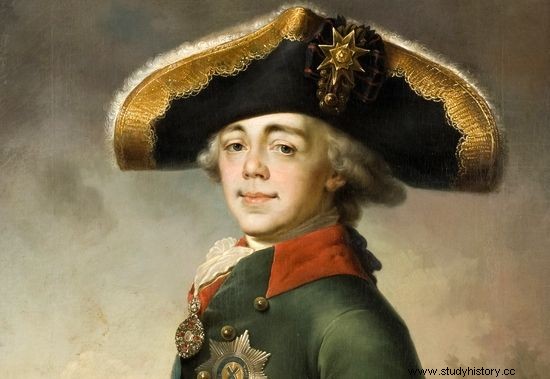The Jesuits were not idle. They contributed to the development of the Catholic Church through evangelistic and missionary work. In addition, they carried the torch (or muzzle) of education and unscrupulously fought the Reformation. Overall, they served the cause as much as they could. What their surprise must have been when the Pope ordered the dissolution of the order. The Pope must have experienced an even greater shock when the Jesuits survived, hidden under the mantle of ... the Empress of All Russia!
While the Jesuits were good at the ministry, they had minor problems on all other fronts. The Society of Jesus was active in many fields, and therefore came into conflict with "neighbors." The Jesuits had disagreements with other orders, such as a dispute over the construction of a new church (of course thanks to a privilege from the pope) within two hundred steps from the existing one.
They maintained a similar cordial relationship with academic corporations, which built their colleges under their breaths, in cities that already had universities. It usually ended with quarrels and trials, and the Jesuits' skin was saved only by the favor of the holy father.
Times are hard for the Jesuits
Eventually, however, the head of the church also became disenchanted with the excessively arrogant and independent order. Under pressure from several rulers, especially the Bourbon dynasty, on July 21, 1773, Clement XIV proclaimed a brief Dominus ac Redemptor.

Deciding to dissolve the order, Clement XIV could not have foreseen that the Jesuits would be saved by an Orthodox monarch.
He sanctioned the formal dissolution of the Jesuit order in the entire church, which was related to, inter alia, taking over their property. Thus, in all the countries of Europe, the Society of Jesus ceased to exist. Everyone except Russia.
How is it possible, however, that the Jesuits survived in the country of Catherine the Great - a country not famous for freedom after all and professing Orthodoxy, not Catholicism? It was mainly about Poland.
Catherine II was definitely not one of the Pope's friends. As soon as there was an opportunity to thwart his ranks, she immediately took advantage of it.

Oppressor of the Polish nation and protector of the Jesuits in one. Can be? It is possible!
It absolutely forbade the dissolution of the order in the territories of the Republic of Poland, which had come under its rule a year earlier as a result of the first partition.
After all, it is her state, her Jesuits, and only her business, and Rome and its esteemed bishop have nothing to do with it! And since you can hurt at least a little the pope, who was an opponent of the partitions …
Katarzyna the Great as a rescue for the Jesuits
The tsarina's initial unfavorable attitude towards the Jesuits was a derivative of hostility towards the church as a whole. However, after some time Catherine decided that since the order represented the modern face of the church, she could be of service to her in the process of westernizing the empire.
After the partitions, there were 201 monks within Russia, whom she instructed the governor of the new lands to closely observe. When she decided to receive the Jesuits in audience and listen to them, she found herself impressed with their knowledge of the world and general intelligence . She also liked the Polotsk Jesuit college, which quickly became a leading center of learning.
This was not the end, because Katarzyna believed that Jesuits would also be useful in her contacts with Poles . As subjects of the tsarines, they were to suppress subversive moods among the Polish nobility and aristocracy . They were also supposed to be a living example of the fact that cooperation with the new government can bring considerable benefits.
Russia - a paradise for the Jesuits
Soon, the Belarusian Jesuits were joined by monks from other countries who did not want to accept the dissolution. Thanks to the influx of, among others, Germans, French, Poles and Italians, the Society of Jesus within the Imperial Empire became a cosmopolitan order.

The successor of Catherine the Great, Paul I, also took care of the Jesuits.
In turn, his Polotsk college gained the status of one of the most important universities in Russia . Catherine, who liked the positive influence of the Jesuits on education in the country, took care of the monks until the end of her reign. At the same time, her successor, Paul I, was under their influence.

In Catherine's opinion, the Jesuits were above all useful, and much more than any other religious order. Nevertheless, the tsarina kept them on a short leash, gradually making their existence dependent on the state. It isolated the order from the Catholic church hierarchy and categorically forbade it from any missionary activity. The Russians abandoning Orthodoxy were the last thing she needed.
Here are two great paradoxes of care provided by the Tsarina over the Jesuits. On the one hand, the missionary order survived because it abandoned its primary goal of converting non-Catholic Christians. On the other hand, this ultra-Catholic, even radical church organization survived only in a completely Orthodox state, under the authority of an Orthodox dynasty ...
Sources:
Basic :
- Janusz Tadeusz Nowak, Witold Turdza, Treasures of Krakow monasteries , vol. 2, Historical Museum of the City of Krakow, Krakow 2012
Complementary:
- Dennis J. Dunn, The Catholic Church and Russia:Popes, Patriarchs, Tsars, and Commissars , Ashgate Publishing Company, Vermont 2004.
